Features of dismantling slate
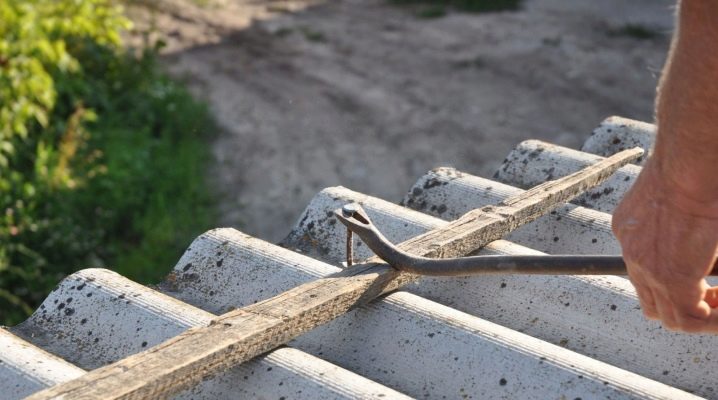
Over time, the roof covering may need to be replaced or repaired. And sometimes the tenants of the house just have a desire to change the appearance of the building. The first thing to start with in this situation is to remove the slate. This must be done correctly so as not to damage the rolled roof, crate, other elements, and the slate itself, which, if necessary, can be used in the future for household needs.
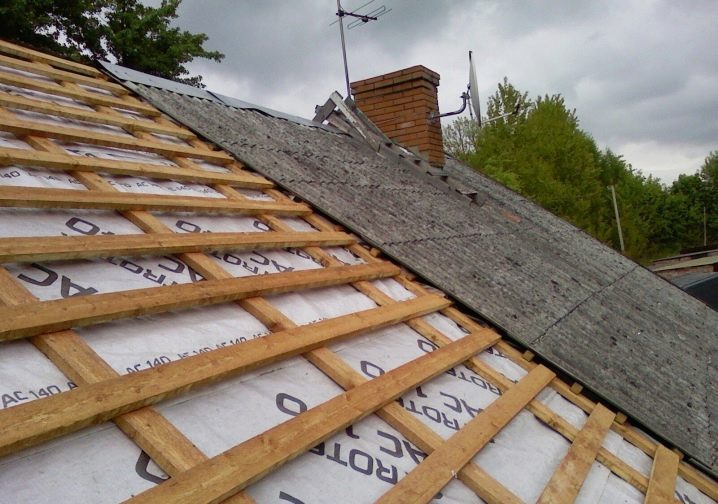
Security measures
As with any construction work, safety precautions should be observed when dismantling the slate. Let's take a look at the main points to take into account.
First of all, work should not be carried out in rainy weather. In addition to the danger posed by the wet coating itself, the lichen growing on it can also be quite slippery when wet. Therefore, the roof must be absolutely dry during work. This will minimize the risk of injury.
Before starting to dismantle the roof, it is necessary to check its reliability. The structure must be strong enough not to collapse under the weight of the people on it.
Work should be done in tight clothing, gloves and a respirator, as well as in comfortable non-slip shoes.



When a number of slate sheets are removed, it will also be necessary to dismantle the waterproofing material so that it does not obstruct movement along the crate. You need to move around the roof using ladders, which have special hooks for fastening to the ridge of the roof. With their help, the weight is distributed more evenly, even over a larger area of the surface. This will prevent the old slate from breaking.
It is recommended to use a safety rope that can protect against injury in the event of an accidental fall. They should also be hooked onto the skate. In addition, the area of the slate slope should be protected. It is important to ensure that there are no people under it during the dismantling process. The weight of a slate sheet is about 20 kilograms, and its fall on a person can lead to serious consequences.
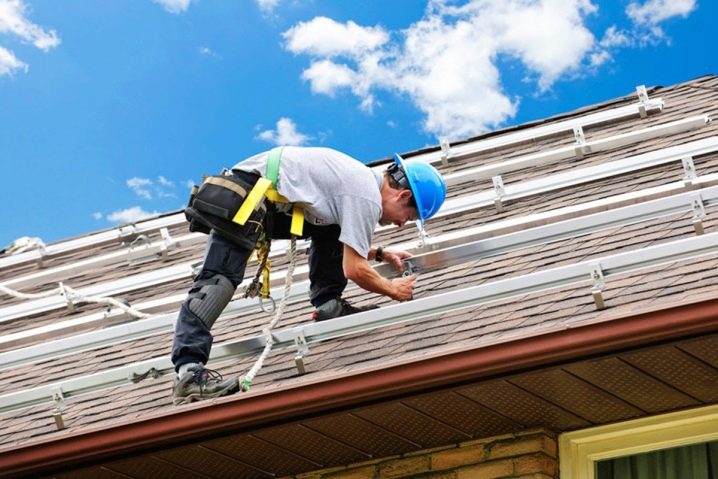
Sheetless technology
For greater efficiency, it is recommended that the dismantling is not carried out alone. The best option would be to have two or three workers. However, in the absence of assistants, you can cope on your own.
The easiest way is to get rid of the old coating if it is damaged and unusable. In this case, there is no need to preserve the materials themselves. Usually the slate is fixed with nails. This means that in order to remove it, there will be enough stairs, a ladder, a nail puller, a hammer and a knife, with which you can cut waterproofing materials.
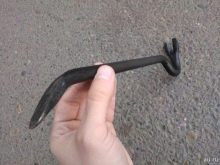
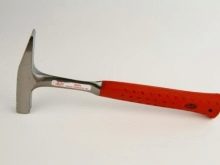
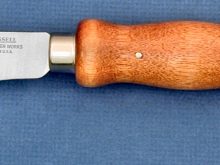
Work should start from the top and top row of slate sheets. The nail puller pulls out the fasteners on which the skate is held. Sheets are usually laid with an overlap on the adjacent one, and they should be removed, starting with the very last.
Since keeping the slate sheets in their entirety is irrelevant, to remove the sheet, you can simply hit the head of the nail with a hammer. This will help drive it into the wood base.
The slate itself, with this action, breaks through, and it becomes easy to remove it both as a whole and in separate breakaway elements. After that, you need to remove the fasteners from the crate and continue working according to the same principle.
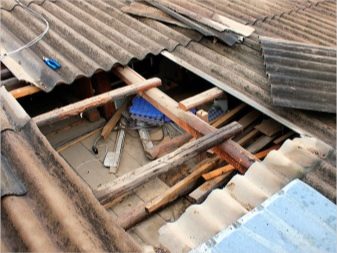
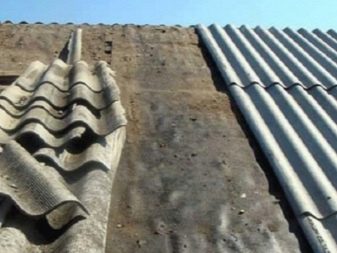
Sheet preservation technology
If it is decided that the slate leaves need to be preserved intact for future use, the dismantling technology will differ from the previous option.The utmost care is required here.
The ridge element must also be removed first. After that, the slate is removed, but in the opposite order to the previous one, that is, from the bottom of the roof. Nails must be removed very carefully so as not to spoil the material. After the slate is free of fasteners, you need to lower it to the ground, carefully holding it. In order not to harm the material, when pulling out the nails, you need to use a small board, which is placed under the heel of the nailer.
If the slate was fixed on self-tapping screws, they must be carefully unscrewed. This method is much simpler than the previous one, but it is only suitable for dismantling relatively new roofs. If the installation was carried out using brushed nails, it must be borne in mind that it is almost impossible to remove them without damaging the material. In this case, the only way is to cut off or bite off the cap.
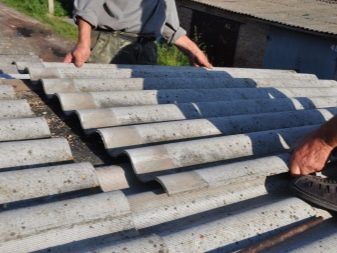
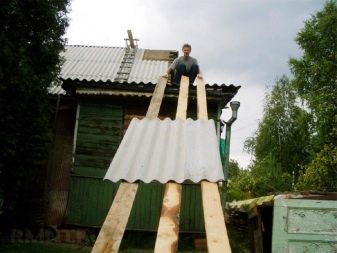
Removing material
It is not easy to carry out this procedure alone. The best option is to carry out the work with the participation of three people.
In this case, the task of the first of them will be to dismantle the fasteners. In this case, a person must either stand on the crate, not covered with slate sheets, or on the stairs.
The location of the second should be on the skate or not far from it. This assistant will hold the slate sheet, secure it with a rope and lower it down as carefully as possible.
The third person should be standing close to the roof. Its task is to accept the deflated sheet, untie the rope from it and carry it to a previously organized place.
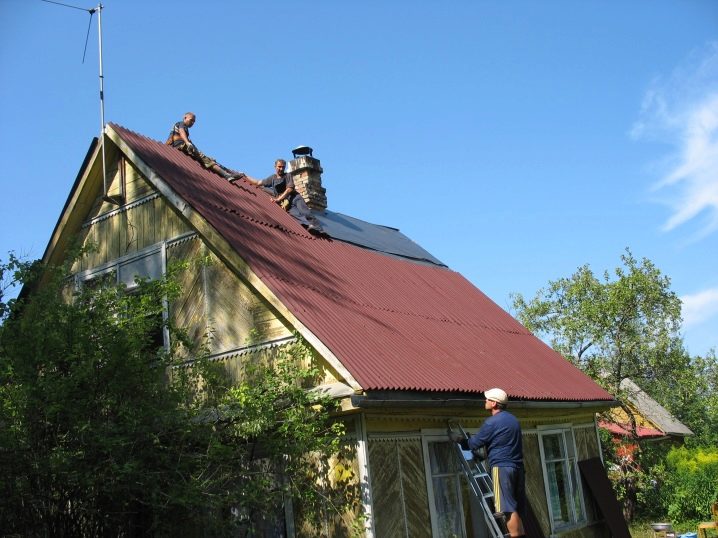
If there are no assistants, it is recommended to start independent work from the bottom. The last element must be freed from the fasteners and carefully released from under the other sheet. In this case, lowering the materials with a rope is not very convenient. A more efficient solution would be to install several long planks between the ground and the eaves. It will be easier to lower the sheets along them due to the fact that they begin to abut against each other. In this case, you will not need to accept each sheet separately.
It is better to close the beginning of the descent with any soft material. This will prevent the slate sheets from splitting during the descent.
For information on how to dismantle the slate, see the next video.













The comment was sent successfully.